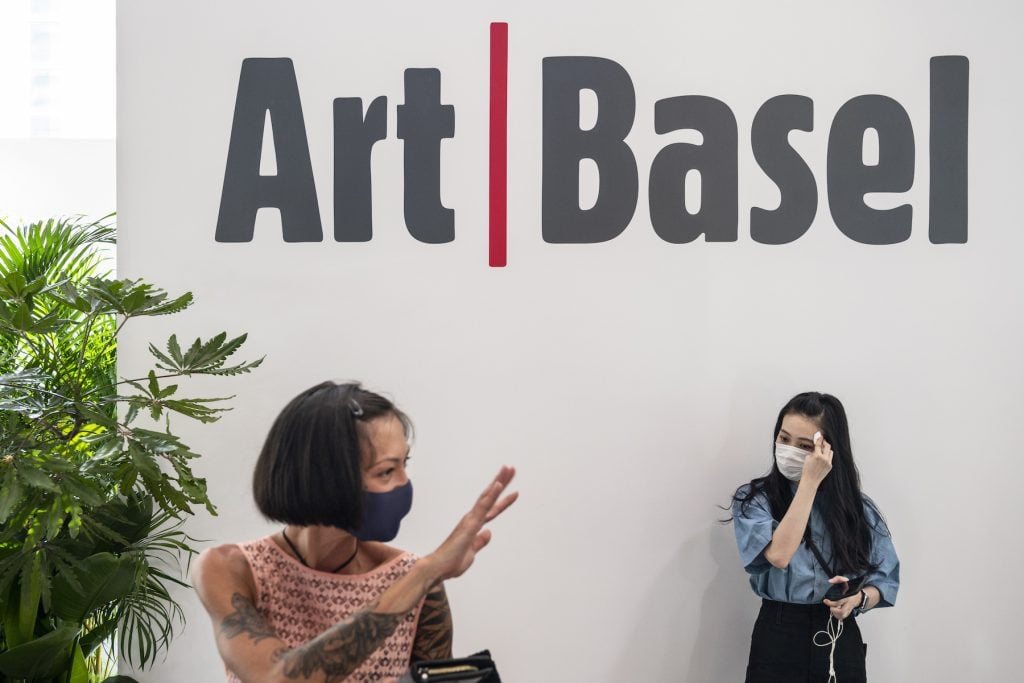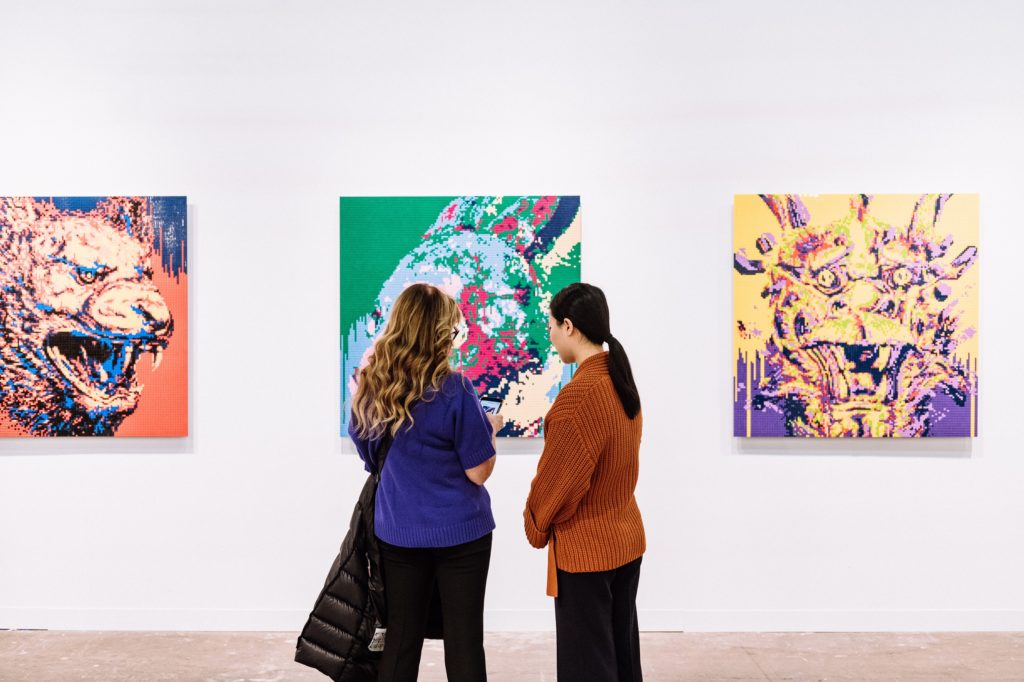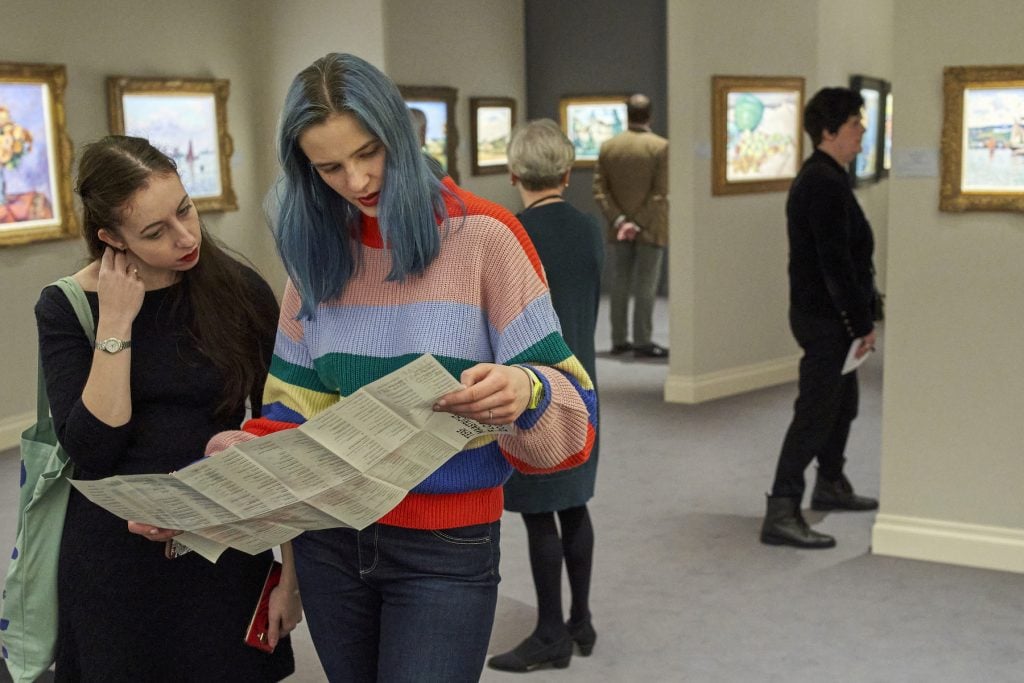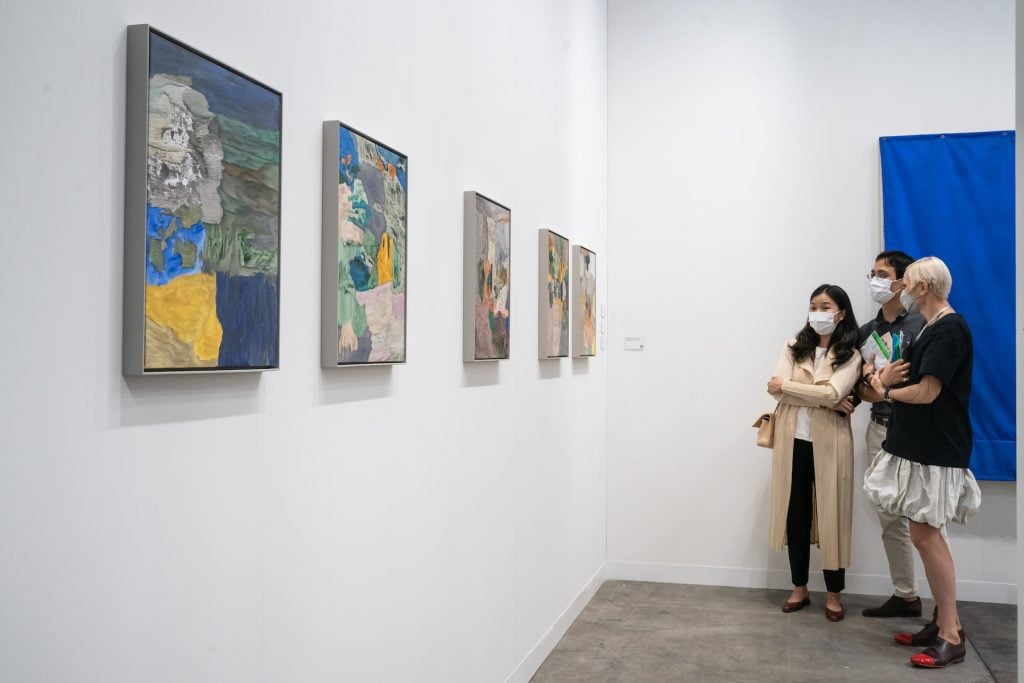Analysis
High Net Worth Millennial Women Are Powering a Gallery Recovery and 7 Other Takeaways From Art Basel’s Latest Market Report
Dealers emphasized the importance of maintaining relationships with collectors and attending art fairs

Dealers emphasized the importance of maintaining relationships with collectors and attending art fairs

Eileen Kinsella

This morning, Art Basel and UBS released the results of their latest data dive into the global art market, this time on the topic of “Resilience in the Dealer Sector,” tracking patterns and activity in the first half of 2021. The report was written by cultural economist Clare McAndrew, founder of Arts Economics.
At a time when there is considerable doubt and fear about how the Delta variant of the coronavirus may impact numerous fall events, including the return of the physical fair of Art Basel in Switzerland later this month, the report aims to paint a picture of an industry that is going strong amid the ongoing challenges of the pandemic.
Art Basel global director Marc Spiegler noted that the results arrive “during one of the most challenging and potentially transformative periods ever experienced by the global art market.” Spiegler said McAndrew’s mid-year review “provides crucial insights into the resilience and rapid adaptations that galleries across all sectors have shown —especially in terms of deploying the digital strategies devised last year.”

Ai Weiwei work at Deitch Projects, the Armory Show. Photo: Teddy Wolff.
The report focuses on employment structures and sales, based on responses from more than 700 dealers operating in art and antiques markets in 54 regions and countries. It also presents results of a survey of high net worth (HNW) collectors in five markets—the US, UK, Hong Kong, China, Germany, and Switzerland. The latter survey focused on these collectors’ interactions with galleries in 2021 so far.
Perhaps not surprisingly, given how active the art market has been, sales in the sector as a whole increased by ten percent. All segments of the market in excess of $1 million, saw improvements in sales, with dealers with over $10 million in turnover reporting the highest average change in sales (21 percent).
Meanwhile, dealers with turnover less than $250,000 saw sales dip marginally below results for the first half of 2020. Mid-size dealers in the $500,000 to $1 million turnover segment saw values decrease by 3 percent on average.
According to the findings, Asian dealers reported the biggest improvement in sales, with an average 18 percent increase over 12 months. Dealers in Europe reported the poorest performance, with a seven percent decline on average.
In 2021, 52 percent of dealers reported having some employees working remotely, with 27 percent doing so occasionally and 25 percent more regularly. A total of 54 percent of those businesses with remote work had introduced it in response to the COVID-19 pandemic.
The pivot to online sales amid the widespread lockdowns and fair cancellations appears to be permanent. The share of online sales for dealers at all levels remained more than two times the level that it was at in 2019, and accounted for 33 percent of all sales.
Given that NFTs or non-fungible tokens took the art world by storm earlier this year, the survey found that 48 percent of HNW collectors reported an interest in purchasing digital artworks over the next 12 months.

Two of the visitors look at a map with the location of the art galleries during the TEFAF art fair on March 7, 2020 in Maastricht, Netherlands. (Photo courtesy Getty Images.)
Amid the global health crisis, the median spending by HNW collectors rose ten percent year on year in 2020. The first half of 2021 saw a further increase of 42 percent on average, “illustrating the impact of HNW collectors on market recovery.”
The report found that this advance was driven by millennial collectors, who had the highest spending overall ($378,000)—more than three times the level of their older peers. In the first half of 2021, spending by female HNW collectors increased by just over one-third to $410,000, more than double the level of their male counterparts, whose spending grew by just nine percent.
In the current year, the sector continued to support gender-balanced, knowledge-based jobs. In the primary market, 52 percent had a female founder, and women made up the majority of employees at partner level, at 61 percent, and a whopping 76 percent of sales and commercial directors.
For collectors, dealers and galleries were the most used channel for purchasing, with 82 percent of collectors having purchased through a dealer in the first half of 2021.
As for the dealers, 69 percent of those surveyed for the report said that maintaining relationships with existing collectors as their top priority in 2021, followed by online sales and exhibitions (50 percent), and art fair participation (41 percent).

Visitors attend the first preview day of Art Basel at the convention and exhibition centre in Hong Kong of the Art Basel Hong Kong 2021 on May 19, 2021 in Hong Kong, China. (Photo by Anthony Kwan/Getty Images)
With respect to the impact of the pandemic on employment in the sector, while it was a “major concern” for most galleries, there were “promising signs” that at least some of the job losses in 2020 were recouped in the first half of 2021, according to the report.
The average number of those employed at galleries returned to 2019 levels after a drop in 2020. Of the businesses surveyed, 23 percent downsized their workforce in 2020. In the first half of 2021, the share of dealers hiring (25 percent) exceeded those losing staff (13 percent).
Just over half of the dealers (51 percent) reported an increase in sales, compared to the first six months of 2020. Meanwhile 45 percent reported a decline, and four percent said sales remained stable.
Overall, 91 percent of dealers estimated that their sales would either increase or remain stable over the next 12 months, while nine percent predicted a decline. Meanwhile 37 percent of dealers predicted greater net profitability in 2021 compared to 2020.
As for online sales, 64 percent predicted these would continue to increase over the next 12 months, with only five percent predicting a decline through this channel. Two thirds—66 percent—also predicted an increase in art fair sales.